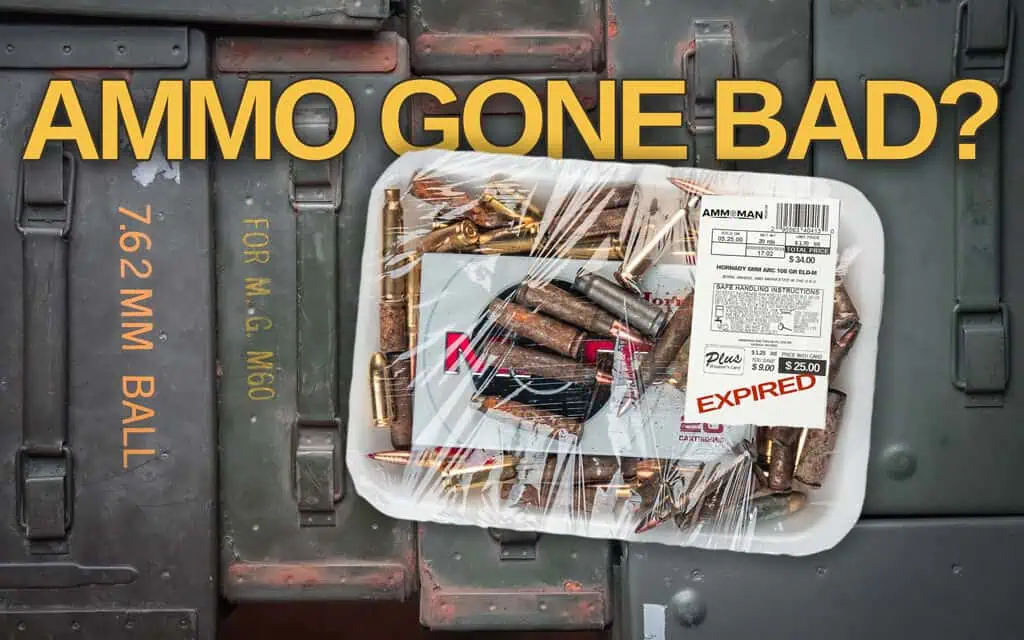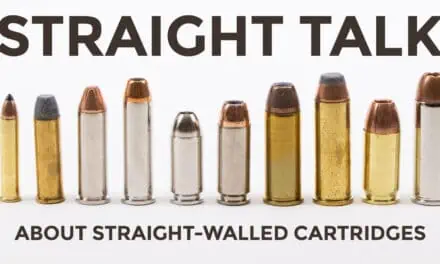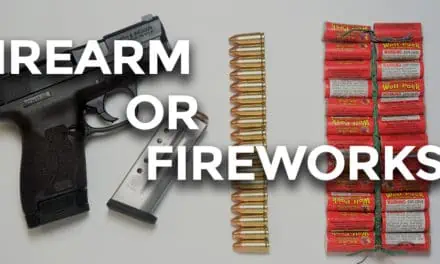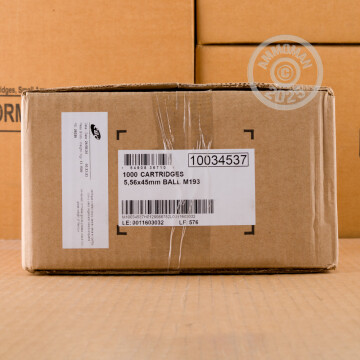Worried about ruining your stash of ammo? Don’t worry, here’s a quick look at what we think is the best way to store ammo so you can stock up when prices are good and shoot confidently when you need to!
TLDR? Check out the video below for a 60 second briefing from Kenneth on the best practices for ammo storage:
First Steps in Ammo Storage
The first thing you need to do when getting ready to store your ammo is determine a few things:
- How much ammo are you planning to store
- Where you will store it
- How long do you expect to store it
Answering these questions before you pick the method of storage will help save you time and money! If you’re planning to shoot through your ammo in a few months, go ahead and skip to the “How to Store Ammo Short-term” section, at the bottom of the article.
When we can, we’ve linked out to places you can find some of the supplies and those links may contain affiliate links, which means we earn a small commission if you buy them.
Best Way to Store Ammo
The best way to store ammo is fairly straightforward. The main priority is to (if possible) make sure the ammunition is in an airtight bin or bag, and periodically check it to ensure moisture hasn’t found its way into the container and ammunition. Let’s go over some specifics.
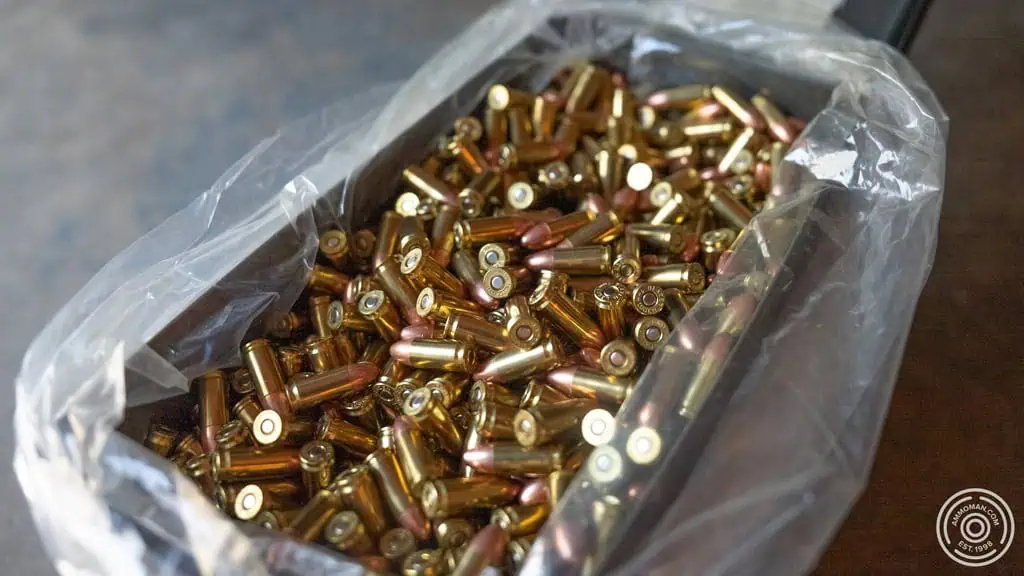
2,000 round ammo can of 9mm Blazer Brass 115 gr.
Keep Your Ammo Dry
Rain, humidity and cold can all quickly degrade the condition of the ammunition however, as long as you check on the ammo to make sure it’s not wet, you shouldn’t have any major issues. It does not need to be at an exact temperature, so there’s no need to turn down the thermostat in the house just yet.
Use an Appropriate Container
Even if you are only storing your ammunition for a few months at a time, if it is going to be transported to and from the range, I always recommend keeping your ammo in an airtight container. It might not matter for quick trips, but I suggest making the habit of keeping your ammo in either in a metal ammo can, plastic container, or a dedicated ammo bag. You can also store the ammo in its original boxes or loose in the same containers.
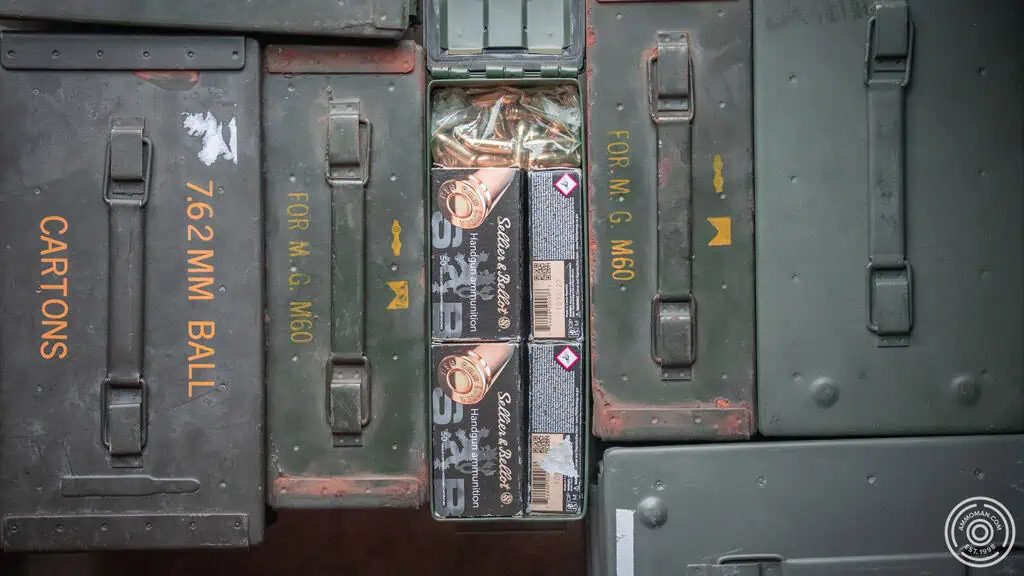
Storing ammunition in it’s original box is good, but be mindful of the cardboard boxes causing rust quickly if exposed to any moisture.
Clearly Label Each Container
It’s important to know that these cartridges are heavy in masse, and like mentioned earlier, ammunition needs to be kept out of the elements whenever possible. While there’s no set rule on a type of container or bag, it’s smart to choose something that can be carried easily, and has a way to be clearly labeled with what is inside to avoid any possible mix-up at the range.
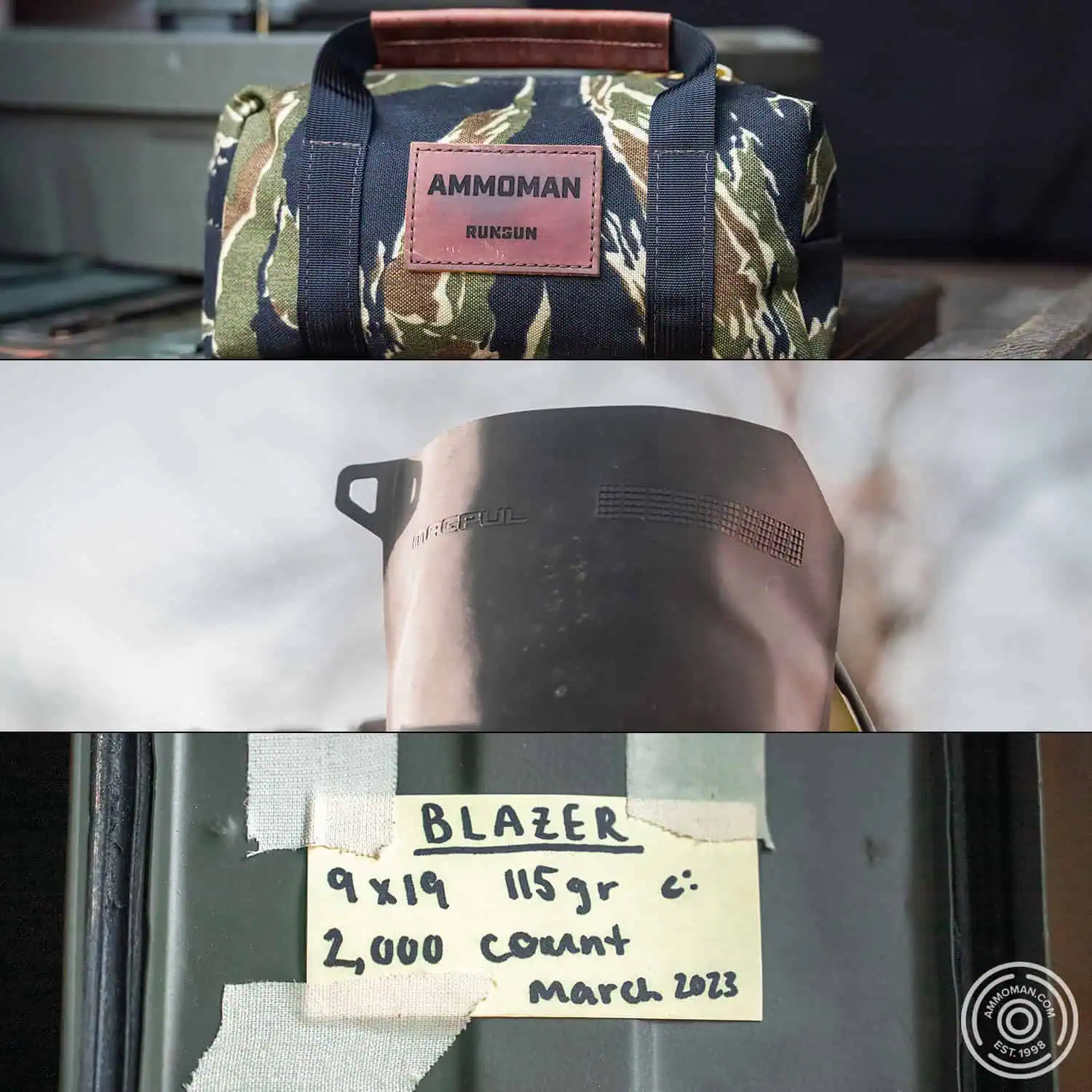
(Top-Bottom) Run+Gun 1K ammo bag, Magpul DAKA “volume” pouch with grid label, and sticky note taped to .50 cal ammo can.
I highly recommend the DAKA line of products from Magpul. Or if you’re looking for something a bit more eccentric, check out the RunGun’s, “mag bag” for something your friends will be sure to envy! These are great for ammo or your magazines.
Top Ammo Storage Mistakes to Avoid
Here’s a few tips on what you should avoid with general ammo storage. The most important thing is to avoid large fluctuations or conditions that the ammunition is in (environmental and temperature). These shifts can cause variations in performance, and at the extremes, dangerous failures.
Storing Ammunition Too Hot
If you have your ammo stored in a location or environment that is too hot, you may degrade the powder stability, as well as reduce overall reliability. At prolonged exposure to excessive heat, there is also the potential for misfires. Hopefully, we can all see the greater damages and liability risks with that.
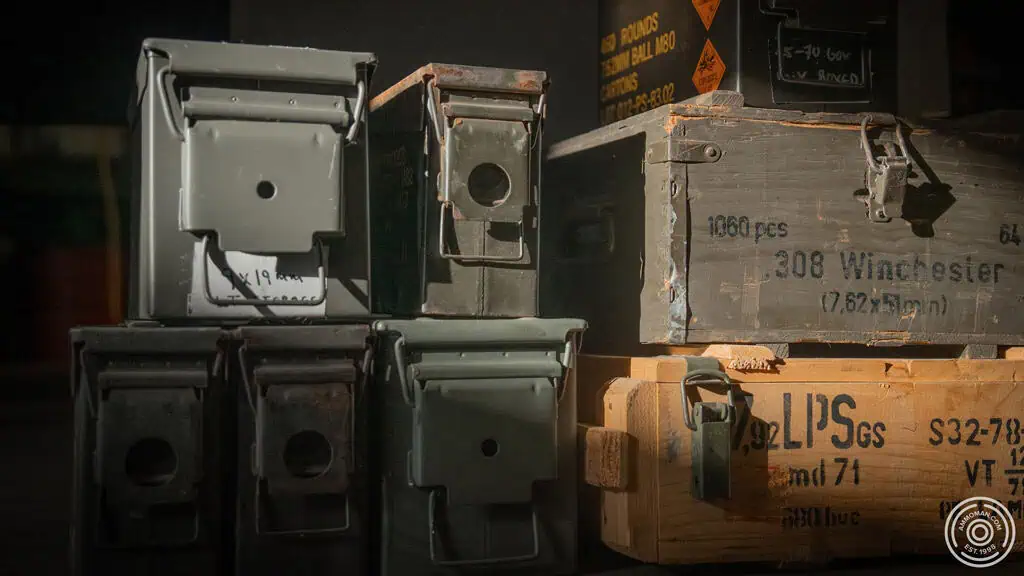
Over time, sunlight can affect the quality and reliability of ammunition.
Note: Most manufactures state “too hot” to be at or greater than 150 degrees Fahrenheit. As long as you aren’t in the deserts of Arizona and New Mexico, or keeping your ammo right next to the fireplace you should be okay!
Storing your ammo in a sealed container, away from direct sunlight is a great start to the storage game.
Storing Ammunition Too Cold (Below Freezing)
On the flip side of extremes, storing ammunition too cold will also cause a different slew of problems. Colder storage can still affect the powder (propellant) stability, which will have adverse results in performance down range. It will also reduce the primer sensitivity which is responsible for starting the explosive sequence. This is what happens when the bullet separates from the cartridge and is shot out of the barrel! This means you may have a bunch of rounds that go “click” instead of “bang.”
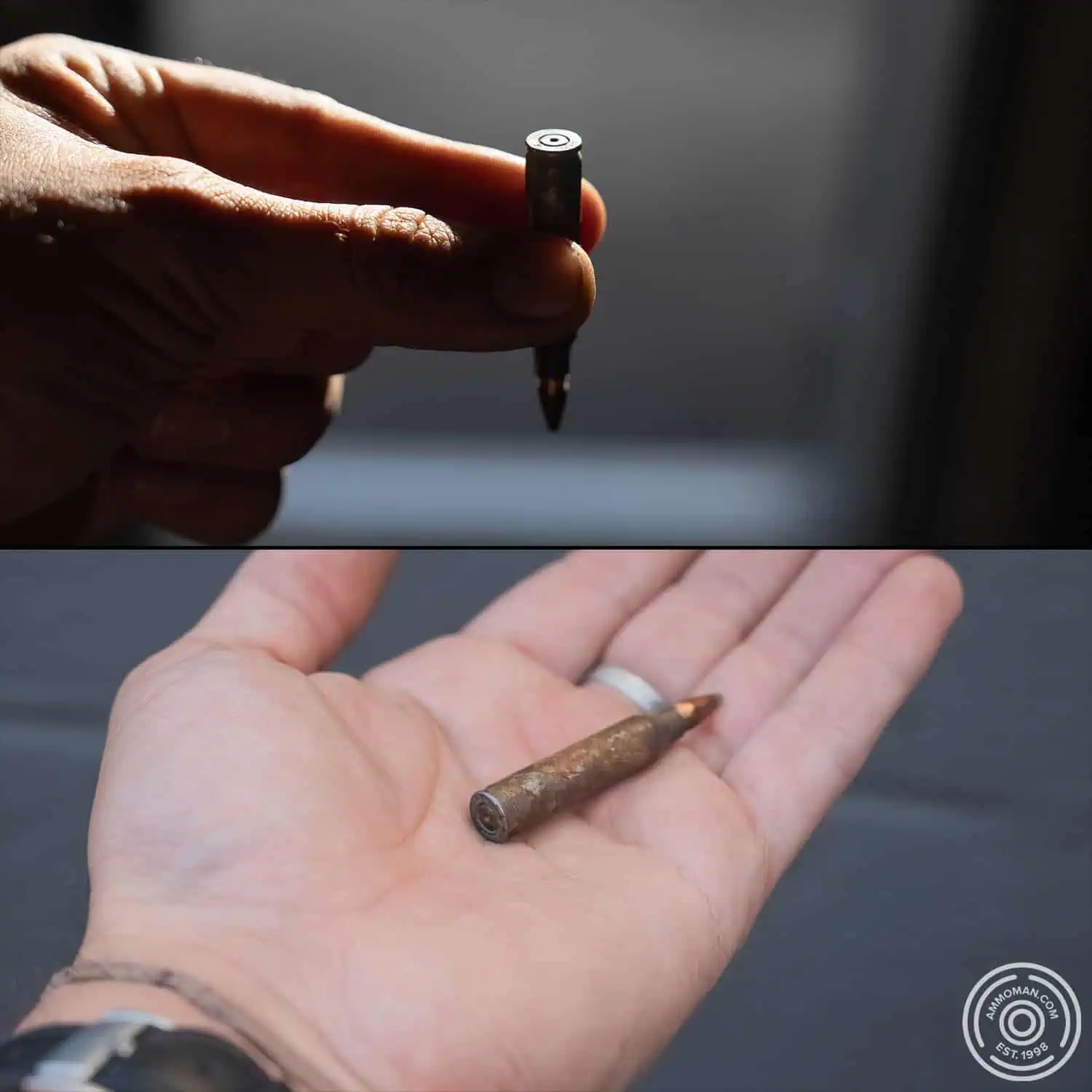
A rusted 5.56×45 cartridge with a dented primer from a failure to fire.
That’s no good for anybody! While you may not be able to spot this effect with the eye, you will definitely notice the lack of rounds sent on target. It will be a sad and quiet ride home from the range.
If you are located in a colder state or location, you might consider adding a form of insulation to your ammo container, or keeping your ammo stored inside a climate controlled area.
Storing Ammunition in Humid Areas
Keeping your ammunition in a humid environment is probably the worst of them all. Moisture can quickly find its way into the cartridges and will corrode each component of the round: Primer, casing, powder, and bullet. This can cause catastrophic failures and malfunctions.
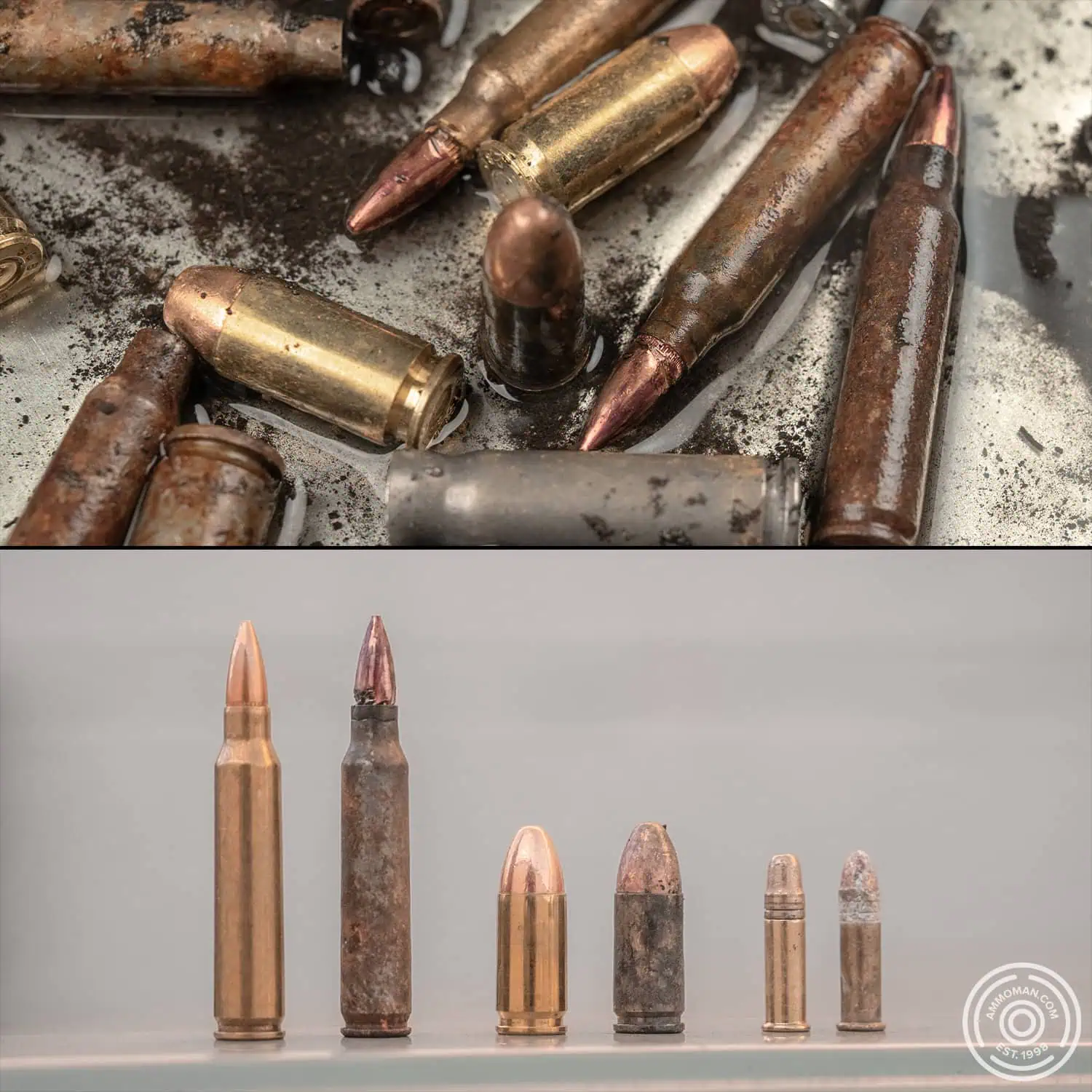
(Top) Varying stages of rusted ammunition. (Bottom) Brand new vs. corroded ammo.
Switching your ammo from a hot environment to a cold one quickly is also one way to introduce moisture. If you can, throw in some desiccants inside the container to soak up any moisture that may have accumulated.
How to Store Ammo Long-Term
My recommendation on how to store ammo long term is the same as general storage, but I have a few extra tips that keep the ammo perfect for years to come. Start by using your preferred airtight container of choice. I like using the metal M2A1 (.50 cal) cans or plastic versions.
I place a plastic bag liner into it to prevent any moisture from coming into contact with the ammunition, should the gasket on the can fail. Then I dump the loose rounds inside. After I have added all of the ammunition I want, I put the appropriate amount of desiccants or heavy duty silica packets mixed in with the ammo.
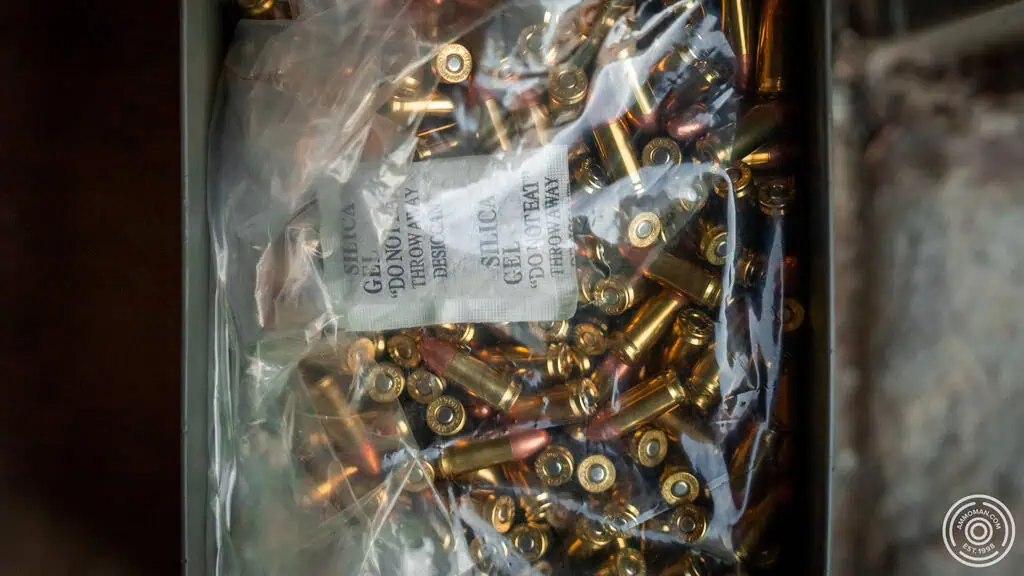
Desiccant packs keep moisture from accumulating inside storage containers.
Seal the bag as best as you can, and secure a label on the inside before closing. You can tape the front of one of the original boxes to the ceiling of the container so you remember the cartridge details. I also label the outside, but it can potentially wear out, which is why I have a label inside the can.
I like to keep my ammo cans in a basement where it is cool and dry. One last moisture preventative I take is keeping the cans on a shelf, pallet or a sled. This way they are not sitting directly on the ground.
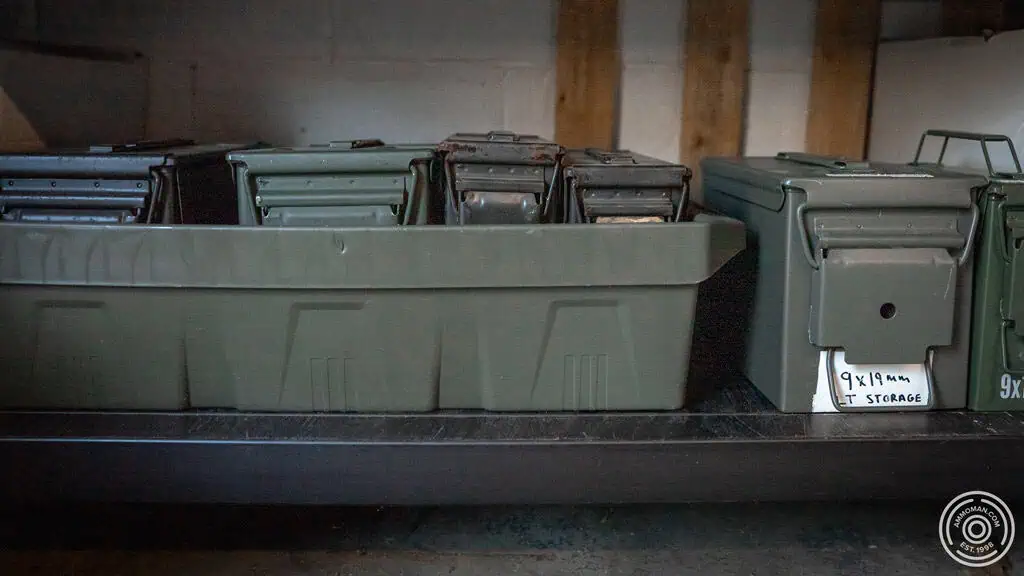
Ammo cans sitting on a shelf in a portable sled.
If you store your ammo in this fashion, you can be sure to check on it at the end of each year for years to come with confidence that each cartridge is as good as new!
How to Store Ammo Short-term (One Year or Less)
For short-term storage (anything less than a couple of months to a year), the only thing you need to do is make sure to store your ammo away from the elements as much as possible. Use a good container like mentioned throughout this article, and periodically check the condition of the ammunition.
And of course, there’s no need to worry about storage techniques if you are shooting it! All you have to do is recycle the old, and order some more from us.
Thanks for reading and if you are looking for more tips on shooting or other topics, check out other articles I’ve written and our socials for more info!

